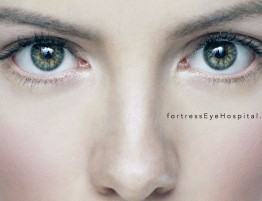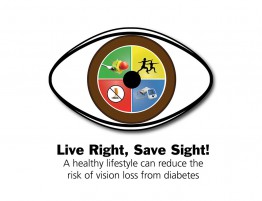By: Dr. Omale Charles
1. Can your eyes be damaged by reading in dim light, wearing the wrong glasses, or over using the computer?
No. None of the above have been shown in adults to lead to any long term eye damage although all may cause a temporary feeling of eye strain and tiredness. Wearing the wrong pair of glasses will merely give you blurry vision, as your prescription will be imperfectly corrected. The unconscious effort to sharpen the vision can easily fatigue the ciliary muscle (internal focusing muscle of the eye), the external muscles (which control eye position and direction), and even the brow and eyelid muscles, all of which can lead to a headache but not eye damage.
2) Does the wearing or not wearing of glasses by children affect how fast their glasses prescription increases?
No. There is no evidence that this is true. Depriving a child of glasses when he needs them (or giving the child a deliberately weaker pair than is required) because of parental fear that a full correction will accelerate the development of more severe myopia, is not based on any scientific evidence. The prescription will develop naturally with or without glasses.
3) Is sitting too close to the TV dangerous?
No. Children often sit close to the television which can be a great source of irritation to their parents, but it is harmless. In most cases children sit close simply because they can , their young eyes having no problem focusing close up. Rarely do they sit so close because the television is blurred from a distance, but persistent close viewing probably justifies a vision check at the doctor.
4) Do children grow out of their squints?
Usually they do not. Treatment is necessary to prevent the squinting eye becoming lazy, and leading to a condition called amblyopia. Any child with a squint beyond the age of 4 months should be examined by an ophthalmologist (or before if the squint is very obvious). Leaving the condition untreated beyond the age of 6+, assuming it will disappear alone, or because ” everyone in our family has a squint” destines the child unnecessarily to a weak eye all his/her life.
5) Are Learning disorders such as dyslexia related to poor vision?
Rarely, although this is a controversial subject. Clearly blurred vision needs to be detected and treated if present. Squints or eye movement disorders need to be detected as occasionally they can make reading difficult, although this is very rare as a cause of reading difficulties in my experience and even when such a problem is present, it doesn`t necessarily explain the learning difficulty.
However as vision isn`t just a matter of seeing, but also involves a significant higher component within the brain of picture/word recognition, integration and interpretation, some believe (mainly within the optometry profession) that deficiencies within the latter functions can be treated, by Vision Therapy either on its own or within a multidisciplinary approach. This is a technique that involves sophisticated eye exercises and training over many weeks and it is said that learning ability can be significantly improved after such a course. Some exercises involve looking at writing through coloured transparent sheets or lenses which are said to correct some kinds of dyslexia.
The Ophthalmology profession rejects these claims. Whilst exercises can help certain eye movement disorders (squints) there is insufficient scientific evidence to prove that eye exercises can influence the visual processes within the brain. Whilst some children may improve after a course of vision therapy, they often improve any way and that on its own does not prove that the therapy had any effect. The Ophthalmology profession recommends special educational techniques and psychological support as appropriate which vision therapy may erroneously delay.
Ref;
Optometrists Network Opinion
American Academy of Ophthalmology Opinion
6) Can cataracts be removed with laser?
A cataract is an opacity of the lens of the eye, situated behind the pupil. Modern cataract surgery involves removing the opaque lens through a small incision in the side of the eye ball, and then replacing it with a plastic crystal clear artificial lens.
The lens is firstly fragmented in to small pieces which can then be “hoovered” out of the eye through the tiny incision. Whilst laser machines exist for the fragmenting stage of the procedure, the technology has not taken off as it is inefficient and slow. The technology used generally is a probe which vibrates at high speed, powered by ultrasound energy, and which shatters the lens much more efficiently.





